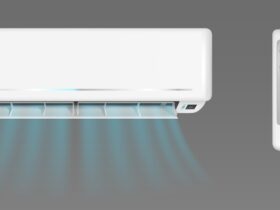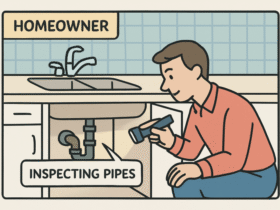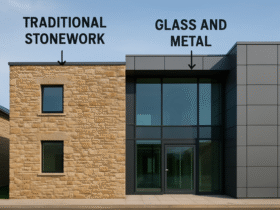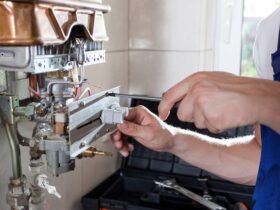Keeping your roof in good condition is key to safeguarding your entire home. Monitoring its health regularly can lead to leaks, increased repair bills, and even structural issues. Homeowners should perform routine assessments to avoid these costly and potentially hazardous problems. Leveraging a roof inspection by experienced professionals ensures a thorough evaluation, catching issues early and extending your roof’s lifespan.
Understanding what to look for during a roof check empowers you to maintain your home’s safety and comfort. While DIY inspections are valuable, especially after storms or changing seasons, an annual professional roof inspection remains the gold standard. Here’s a comprehensive checklist to help guide your roof assessment and maintain your property’s value and integrity.
Safety Precautions
Your safety should be the top priority whenever you assess your roof. Falls are a serious risk, especially during inclement weather or without the proper equipment. Always use a sturdy ladder set on even, dry ground, and wear shoes with a good grip to prevent slipping. A safety harness is strongly recommended for steep or high roofs. Steer clear of inspecting your roof during or after rain, snow, or when high winds are present. If you’re uncertain about your footing or feel uncomfortable with heights, don’t hesitate to call a professional—your safety is worth it.
Exterior Inspection
Visual Inspection from Ground Level
Start your exterior check from the ground using a pair of binoculars. Look for curling, cracked, missing, or otherwise damaged shingles. Distorted or missing shingles can allow water into your roof structure and accelerate decay. Pay special attention to areas with unusual color patches, which can signal algae, moss, or granule loss.
Close-Up Roof Surface Check
If it’s safe to get on the roof, carefully inspect the valleys—these channels handle water runoff and are highly prone to leaks. Look for piles of leaves or debris, which can trap moisture. Inspect metal flashing around chimneys, vents, skylights, and other penetrations; rust, dents, or visible separation may compromise waterproofing. Moss and algae patches are more than cosmetic issues—they indicate moisture problems that can eat away at roofing materials and invite further water damage. For more on moss dangers and removal, check out this guide from Better Homes & Gardens.
Interior Inspection
Attic Assessment
Head into your attic during daylight. Look for rays of sunlight poking through the boards—these are clear signs of holes or cracks in your roofing. Examine insulation for dampness, water stains, mold growth, and all warning signs that water is entering the space. Mold not only signals leaks but can also endanger your indoor air quality.
Ceilings and Walls
Inside your home, look for brownish or yellowish stains or bubbling paint on ceilings and tops of walls; these indicate water infiltration. Sometimes, dampness may only occur after heavy rains, so inspect regularly if you suspect a roof leak.
Gutters and Downspouts
Clogged or damaged gutters keep water from draining properly, forcing it under your shingles or toward your foundation. Clean away leaves, twigs, and roof granules (excessive granule accumulation is a warning sign of shingle wear). Ensure that all gutter sections are firmly attached and not sagging. Downspouts should extend several feet from your home’s foundation to prevent water from pooling near your base structure. For gutter cleaning and care tips, see Better Homes & Gardens resources.
Flashing and Sealants
Inspect the metal or rubber flashing around roof penetrations. If you notice warping, rust, or gaps, water could easily seep through. Likewise, any caulk or roofing sealant should be uncracked and free from crumbling or peeling. Faulty flashing or degraded sealant are among the top causes of persistent roof leaks and require prompt attention.
Ventilation
A well-ventilated attic keeps your roof from overheating and reduces moisture buildup, defending against mold and premature shingle aging. Inspect soffit and ridge vents, ensuring they’re open and unobstructed. If you find condensation, a musty smell, or visible mold, your ventilation needs improvement. Adequate airflow can also help reduce your heating and cooling costs, according to experts at Energy.gov.
Professional Inspections
Even the most diligent homeowners can miss subtle or hidden roofing problems. That’s why it’s wise to schedule professional inspections annually—seasonal changes, age, or unseen storm damage can unexpectedly compromise your roof. Licensed roofers have the expertise and equipment to spot issues that homeowners may overlook, making their assessments especially valuable after severe weather events.
Maintenance Tips
Maintain your roof’s durability and appearance by routinely trimming overhanging tree branches, removing debris from the surface, and checking for loose or missing shingles. Quickly addressing minor repairs, such as sealing a small crack in flashing or replacing a damaged shingle, can save thousands of dollars over time by heading off major leaks and structural decay.
This comprehensive checklist lets you stay proactive about your roof’s upkeep and protect your most important investment—your home.







